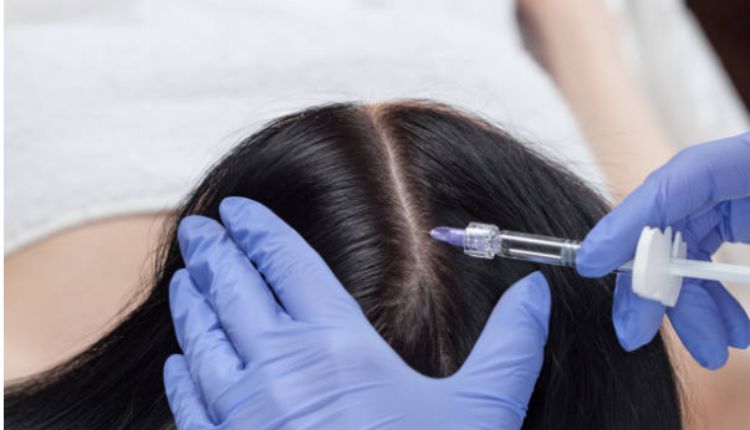Hair loss can be a distressing and emotionally challenging experience for many individuals. In recent years, there has been a growing interest in Platelet-Rich Plasma (PRP) hair treatments as a promising solution to combat hair loss and promote hair regrowth. This non-surgical procedure has gained popularity in the world of hair restoration, and experts in the field have started to uncover its effectiveness and potential benefits.
In this comprehensive article, we will delve into the world of PRP hair treatments, discussing what PRP is, how it works, its applications, and its effectiveness as a hair loss treatment. We will also explore the insights of medical professionals, dermatologists, and experts in the field who sit in the “doctor’s chair” to provide us with their expert opinions on PRP hair treatments.
What is PRP Hair Treatment?
Platelet-Rich Plasma, or PRP, is a substance derived from your own blood. It contains a higher concentration of platelets, which are small cell fragments that play a crucial role in blood clotting and tissue repair. In recent years, PRP has gained rcognition in the medical and cosmetic fields for its regenerative properties, particularly in the context of hair restoration.
PRP hair treatment involves a simple and minimally invasive procedure. A small amount of your blood is drawn, and then it is processed to separate the platelet-rich plasma from other blood components. The PRP is then injected into the areas of the scalp that require hair restoration. The growth factors in the PRP stimulate hair follicles, promote hair growth, and improve hair thickness and quality.
Expert Insights into PRP Hair Treatment
To gain a better understanding of PRP hair treatments, we sat down with leading medical professionals and dermatologists in the field. These experts shared their insights on the effectiveness and applications of PRP for hair restoration.
1. Dr. Sarah Mitchell, Dermatologist
Dr. Sarah Mitchell, a renowned dermatologist, emphasises the potential of PRP hair treatment in her practice. She notes that PRP offers a safe and natural approach to hair restoration. “One of the key advantages of PRP is that it uses the patient’s own blood, reducing the risk of allergic reactions or adverse effects,” she explains. Dr. Mitchell has seen significant improvements in her patients’ hair quality and thickness, often with minimal discomfort and downtime.
2. Dr. James Anderson, Hair Restoration Specialist
Dr. James Anderson, a hair restoration specialist with over two decades of experience, believes that PRP complements other hair restoration procedures, such as hair transplants. “PRP can enhance the results of hair transplantation by improving the overall hair quality in the recipient area,” he states. Dr. Anderson also highlights the minimal side effects associated with PRP, making it an attractive option for those seeking non-surgical solutions.
3. Dr. Lisa Patel, Clinical Researcher
Dr. Lisa Patel, a clinical researcher with a focus on hair loss, has conducted several studies on PRP for hair treatment. Her research findings suggest that PRP not only stimulates hair follicles but also plays a role in reducing inflammation and reversing miniaturisation of hair follicles. “PRP is not a one-size-fits-all solution, but it has shown great promise in various types of hair loss, including androgenetic alopecia and alopecia areata,” she says.
Applications of PRP Hair Treatment
PRP hair treatment can be applied to various types of hair loss and is used for both male and female patients. Some of the common applications include:
- Androgenetic Alopecia: This hereditary hair loss condition, often referred to as male-pattern baldness or female-pattern baldness, is one of the primary targets of PRP hair treatment.
- Alopecia Areata: PRP has shown promising results in treating alopecia areata, an autoimmune condition that causes hair loss in patches.
- Postpartum Hair Loss: Many women experience hair thinning and loss after childbirth, and PRP can be an effective solution to restore their hair.
- Hair Thinning and Quality Improvement: PRP is not limited to hair regrowth; it is also used to enhance hair quality, making it thicker and healthier.
Effectiveness of PRP Hair Treatment
The effectiveness of PRP hair treatment has been a topic of discussion and research in the medical community. While individual results may vary, several factors influence the success of the procedure.
- Patient Selection: Proper patient selection is crucial for achieving the best results. The ideal candidate for PRP hair treatment is someone in the early stages of hair loss with miniaturised hair follicles, as they tend to respond better to the treatment.
- Treatment Frequency: PRP hair treatments are typically administered as a series of sessions, usually spaced a few weeks apart. This approach allows for the continuous stimulation of hair follicles.
- Maintenance: After the initial treatment sessions, patients may require maintenance sessions to sustain the results. The frequency of these sessions can vary depending on individual response.
- Combination with Other Treatments: In some cases, combining PRP with other treatments, such as topical minoxidil or low-level laser therapy, may enhance the overall effectiveness of the hair restoration regimen.
Conclusion
PRP hair treatment is a non-surgical, minimally invasive procedure that has gained popularity as an effective solution for various types of hair loss. It harnesses the regenerative power of platelet-rich plasma, derived from the patient’s own blood, to stimulate hair follicles, promote hair growth, and enhance hair quality.
Through the insights of medical professionals and dermatologists, we have gained a better understanding of the potential benefits and applications of PRP for hair restoration. While results can vary from person to person, PRP offers a safe and natural approach to combat hair loss and boost self-confidence.
If you are considering PRP hair treatment, it is important to consult with a qualified healthcare provider or dermatologist who can assess your individual needs and guide you through the process. In the world of hair restoration, PRP is undoubtedly a promising addition from the doctor’s chair, offering hope to those seeking effective solutions for hair loss.

